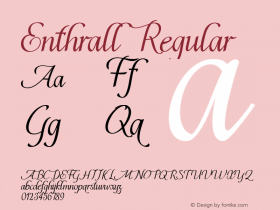
When my brother and sister and I were young, we always had impassioned discussions with my stepfather about coincidence. His theory is that there is no such thing. Even though he doesn't believe in fate or that anything is preordained, he is convinced any event can be traced back to a series of preceding events which made said event inevitable. Then of course we would argue that those preceding events were pure coincidence, at which point the whole discussion started all over again, ad infinitum. To cut a long story short – my stepfather would argue it is no coincidence I did a Creative Mornings talk about sex the same month I review the movie collaterals for Lars Von Trier's Nymphomaniac. What do you think?
Where I had a ton of information about Wes Anderson's previous film Moonrise Kingdom thanks to designer & letterer extraordinaire Jessica Hische, this time I didn't find anything about who designed the movie poster for Grand Budapest Hotel. Anderson seems to have left his signature face Futura behind him, as this is the second movie where the classic (and tired) geometric sans is conspicuously absent. The typeface used for the movie titles and the secondary type on the poster is Archer; the Grand Budapest Hotel logo however looks hand-drawn. I would have been interested to find out who designed the slightly squarish, slightly awkward monoline with spiky serifs, and where their inspiration came from.
Alternative posters really are a big thing these days. Any major film release that sparks our collective imagination spawns the obligatory gallery, and Grand Budapest Hotel is no exception. After celebrating Wes Anderson's previous offering Moonrise Kingdom in similar fashion, ShortList.com again asked some of their favourite designers to create their own alternative visions for Grand Budapest Hotel. Both galleries are definitely worth a virtual visit.
When it comes to highly collectible alternate (film) posters Mondo rules the pack. The Austin, TX company is famous for their limited edition screen printed posters for classic and contemporary films (amongst others). They teamed up with Legendary Pictures and Cruel & Unusual to create this poster for the premiere event of 300: Rise of an Empire and for alternative marketing for the film. Designed by Alex Pardee, the artwork represents a mask of the Immortals, the personal guard to King Xerxes, the Persian warrior elite. Rendered in swirling blood splashes that almost look like Arabesque ornaments, it incorporates story elements from the film like King Xerxes himself and a Spartan shield riddled with arrows. You can examine them in detail on Neatorama.
Rats, this could have been so much better. The Blue Note Records. Unfortunately the design falls short due to the weak choice of a compact extra bold sans serif for the movie logo. Impact is about the most pedestrian option available, while there are countless more interesting alternatives available. Squooshing the face only makes matters worse.

I am not saying this is the perfect solution – the proportions and the rhythm of the photos also need quite a bit of work – but see how resetting the film title in Aurora Condensed for example, one of the signature typefaces in Reid Miles' repertoire, already improves the artwork. Selecting the "right" typeface and using it properly is as important as the choice of images and colour palette.

This on the other hand is a great choice of typeface. The strong, simplified shapes of Kino turn the movie title of Sparks into an instant superhero-worthy logo. Even though I usually am not a fan, the metallic three-dimensional treatment decidedly enhances the typography, making the word look more epic, more dynamic – exactly what the artwork asks for. The starburst, lifted from the main character's costume and integrated in the 'A', is the icing on the cake. The supporting typeface Agency dutifully performs its function as signifier for action movies. But what the heck happened to the kerning between the 'P' and the 'A' in 'SPARKS'?
Comparing the original Chinese poster for Stephen Chow's latest kung fu extravaganza Xi you xiang mo pian (Journey to the West) (above) with the one sheet by Paul Shipper (below) makes abundantly clear why certain films benefit from having illustrated artwork. Even though there is nothing inherently wrong with the Photoshopped composition in the original artwork, the illustration is far superior. The crisp line-work and warm, vibrant colours unify all the elements into an organic whole, turning the characters into living and breathing entities that pop off the page.
Paul Shipper belongs to a new generation of poster artists that work in the tradition of the legendary Drew Struzan. They keep the classic, epic images of our youth alive, injecting them with new vigor and updating them for the upcoming generations of film goers. This makes me hope they will eventually also look for contemporary interpretations for their typography, and leave faces like Friz Quadrata behind them at last.
This is not to say that every single Paul Shipper creation is a masterpiece. Even though technically it is as accomplished as the previous one, I find his illustrated one sheet for Falcon Song not as strong. My beef with this design is twofold. On the one hand the composition seems too loose – it basically is a floating heads poster, very well drawn. On the other hand the free font Still Time is a lousy typeface. I understand what its designer tried to achieve, yet the uneven and sometimes downright illogical letter forms and the spacing issues make this angular neo-script an amateurish mess.
Then there are art directors and designers who go the extra mile to create surprising, innovative lettering or typography in their poster designs. One such example is Mark and Karen Crawford of Los Angeles boutique design firm Blood & Chocolate. By figuratively weaving the trees in the foreboding forest photo for the teaser poster they have them spell out the film title Haunt, towering menacingly over the illuminated house. The actual typography is ITC Avant Garde Gothic, so there still is room for improvement though. ; )
Another inventive use of type can be found on the movie poster for Grand Piano.

Knocking out white skyline sans letter forms on a black background and then cutting away thin rectangular shapes at their top creates an illusion of piano keys. An ingenious solution from ImageMassive.

award-winning poster for Big Significant Things. As he had no assets from the film, he pitched a couple of ideas based on film pulls, and then a couple based on having nothing to work from. Fortunately the director agreed this was the way to go. Below you can see how simple the sketch and pitch for the final poster was.

Corey created the typographic composition entirely from scratch, rendering big three-dimensional Gotham through Cinema 4D, with a little bit of Photoshop to weather the sign. He also went into the local reservoir and photographed some rust and peeling paint from the dam. The end result looks amazingly realistic.
Good typography doesn't necessarily need to be elaborate. Even a simple play with letter forms can turn a movie title in an interesting composition. On the poster for Blood Ties, the two 'O's were tilted and connected, like two links in a chain. This symbolises the bond between the two brothers. As the story is actually set in the 1970s the recognisable period design style and use of Rockwell are fine.
Typography can also carry a whole poster, as exemplified in this one sheet designed by Little Mule Studio for Big Joy: The Adventures of James Broughton. James Broughton was a pioneer of experimental cinema in the 1930s, and a trickster poet who was a precursor to the beat movement in San Francisco. The documentary explores the twists and turns in the life of the artist, who proved art has the power to save lives and make the world a better place. Overlaid over a simple black-and-white photograph of an ecstatic Broughton, the distressed skyline sans letters – as colourful as the character – just scream "fun" to me, loud and joyous. The supporting typeface is Metroscript.

More fun with Corey Holms' poster for Wild Canaries, a farcical detective story about a couple who fall out of and then back into love over the course of their inept adventure. The delightful image reminded me of this hilarious series of children who have not quite yet grasped the concept of hide and seek. See how a simple intervention as having the canaries in bright yellow in a greyscale image, and then having the movie title in that same yellow elevates the artwork to a great design.

The type for the title is the imaginatively named Roman Print Variously Shaded from a Decorative Alphabets and Initials book Corey found at a local used bookstore. The billing is set in a mixture of Univers 45 and Heroic Condensed by Silas Dilworth.
Some films somehow manage to spark the imagination more than others, with inventive and fascinating poster designs as a result. One of these is award-winning opening titles credit sequence for True Detective – surprises and intrigues, and the spider crawling amongst the skyscrapers only adds to the mystery. By the time you're done trying to figure out the artwork you just want to see the movie and find out what it is all about. Mission accomplished.
On a purely aesthetic level the artwork works very well. The toned-down dark browns and skin hues give the introspective image a balanced and calm appearance, while the simplified character shapes of Alternate Gothic and the elegant Didone lend poster a literary touch.
I do like the retro vibe of the semi-abstract illustration paired with ITC Benguiat in the main theatrical poster. Yet I am starting to wonder if this seventies style is becoming a schtick – I cannot shake the feeling I have seen this type of design using classic ITC typefaces from the 70s and 80s quite often lately. Also, do I like this because it references a time period when graphic design was conceptually strong, or simply out of nostalgia because it brings back warm, fuzzy memories of my youth?
Sam Smith's theatrical poster for A24 cleverly connects the film's theme of a man and his exact look-alike with the mirrored bittings of a symmetrical key defined by Jake Gyllenhaal's profile. The key also works on a second level as the key to the mystery of the two identical-looking persons. As the mysterious spider makes another intriguing appearance, I asked Sam Smith about it, but he didn't want to reveal anything.
Sam Smith | "The spider is an important symbol in the film, but it's part of the film's puzzle and I wanted to include it as an ambiguous symbol of the film's psychological mystery."
The nostalgic typeface du jour is a condensed weight of ITC Cheltenham, matching the retro design.
I use the Muppets in my movie poster talks as examples of how to do film poster parodies well. They always have a recognisable and fun thematic connection, unlike Tyler Perry whose spoof posters are completely unrelated to the films he uses them for. Even though the mock trailers are missing this time, Muppets Most Wanted still delivers in the poster department. The main theatrical poster is predictable and not very interesting with the obligatory extra bold sans serif. However as soon as we leave this behind the fun really starts.

The theme of mistaken identities, evil twins and espionage hijinks provided lots of inspiration for the spoof posters. The first one plays off the "good guy impersonates bad guy / bad guy impersonates good guy" theme of Face/Off, perfectly copying the poster and its glowing Futura caps.

The espionage theme is fully exploited in this homage to the fairly recent spy thriller Tinker Tailor Soldier Spy, which also reprises the original's Gotham.

Seeing Miss Piggy as "Bond girl" in this parody of The World Is Not Enough made me notice how the woman's body in the original artwork is impossibly proportioned. Where are her hips, where are her buttocks, why are her thighs so ridiculously thin? Is it any wonder that so many girls and young women end up with body dysmorphic disorders and eating disorders?

More Bond action, this time referencing Daniel Craig, the latest incarnation of Ian Fleming's secret agent in Skyfall. This one plays it a little fast and loose with the typography – the original Neutraface has to make way for Microsoft's butt-ugly system font Trebuchet and the classic architectural sans Eagle.
The Oh My Disney blog has a gallery with an additional 18 spoof posters. They're kind of cute, but not interesting enough for this column.
And here is where we have a brutal transition from a family comedy to some of the most explicit sexual imagery in mainstream movie posters. You have been warned.
When Antichrist made me fear for another series of shocking images.
Philip Einstein Lipski and Maria Einstein Biilmann, operating as The Einstein Couple in Copenhagen, Denmark, however produced a brave, thought-provoking poster series that is as appropriate as it is confrontational. The main theatrical poster zooms in uncomfortably close on Charlotte Gainsbourg's face, contorted in the midst of an orgasm.
This image is in fact a close-up of her character poster, which is part of a larger series, most of which were reprised on this ensemble poster. It is a brilliant idea – all the actors were photographed from the chest up against a neutral, off-white background while they are experiencing sexual pleasure. Or is it pain, because it is striking how similar their facial expressions are to those of people in agony. The climax is expressed in its most raw and naked form, with the actors at their most vulnerable. Witnessing such intimate images makes for some uneasy viewing, yet there is an underlying feeling of compassion shining through. The campaign made me think of the multimedia project turned alternative erotic website Beautiful Agony which "tests the hypothesis that eroticism in human imagery rests not in naked flesh and sexual illustration, but engagement with the face."
The teaser poster is rather cryptic. Is the fishhook a symbol for the main character being hooked on sex? Or does it suggest how she enthralls and captures her sexual partners? Or is it more sinister, a literal visualisation of the pain that comes with the pleasure? As I have not seen the film, I can only guess.
The typography throughout the series is simple Minion caps, with the 'O' substituted by parentheses. Again there are different possible interpretations – either the shape symbolises the vulva, or the void between the parentheses hints at the meaningless compulsive sex experienced by a nymphomaniac. It struck me that the letter forms are a little dark, which makes me think Minion Display would have made the typography more refined.
The last poster translates best the emptiness of the repetitive sexual encounters. There is a certain ennui present in the image, almost palpable in the emotionally detached expression in Charlotte Gainsbourg's face, reading a book and absent-mindedly holding an apple – a biblical reference to the original sin of Adam and Eve? – in her outstretched hand while Shia Lebeouf closes in. This is movie marketing at its most controversial, but also at its best. We can only hope for more film collaterals that make us pause and think. Let's see what next month brings.







